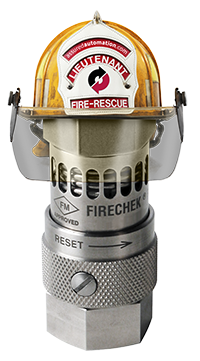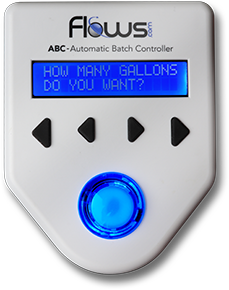Key Considerations For Effective Specification with Jack Siedler jacks@aa-fs.com
Q&A: Valve Sizing & Selection -Part I
Q: In your experience, what are some of the common errors end-users make in the area of valve sizing and selection? In those applications where improperly sized valves result in performance problems, what are some of the common reasons the valve was improperly sized in the first place?
A: In many cases, users today are not familiar with the wide variety of valves available, and, as a result, inappropriate valves are commonly specified. Often, to be “safe,” a valve larger than required is chosen. This factor, along with the popularity of ball valves, has resulted in the over-specification of full-port ball valves. Ball valves are wonderful devices; they are extremely versatile and quite often very cost effective, but they are not a panacea. If a standard-port valve or a valve with a reduced Cv is acceptable, there are very cost-effective, compact, fast-acting, pneumatically operated and electrically operated valves available – some of which are available for only clean services, while others support more general services. There are also other small, fast-acting valves that can handle very high cycle rates and even support steam applications better than ball valves. If the application is corrosive, toxic, abrasive, or slurry and it polymerizes, crystallizes, and/or solidifies, a ball valve may not be the best option.
Another prevalent problem is that users often “assume” various data points in their calculations or sizing program inputs, thus producing erroneous results.
Q: Prior to engaging in the valve sizing and selection process, what application data should an end-user be sure to gather to ensure success and streamline the sizing and selection process?
The following information is generally required:
I. Incompressible Flow
a. Data required for liquids:
– Inlet Pressure
– Pressure Drop
– Temperature
– Flow
– Specific Gravity (In the event of an application with mixed chemicals, this is a value
that depends significantly on the knowledge of the end-user)
– Vapor Pressure
– Viscosity
– Recovery Factor
II. Compressible Flow
a. Data required for gases or vapors:
– Inlet pressure
– Pressure drop
– Temperature
– Flow
– Specific Gravity
b. Data required for steam:
– Inlet pressure
– Pressure drop
– Temperature
– Saturated temperature
– Flow
Q: While valve manufacturers offer a variety of tools to assist users with valve sizing and selection, it can be a little unnerving for end-users to rely on a piece of software for the specification of technology. In your opinion, how effective are today’s valve sizing and selection tools in identifying the appropriate solution for a given application?
A: I believe that, for the most part, sizing programs are an improvement over mathematical calculations and slide rules. They reduce the instances of errors, but they are, as anything else, only as good as the data provided and used within the intended parameters of a simplified sizing technique typically suitable for an electronic sizing program. Some valve applications are simple, others are complex. These two extremes of sizing difficulty – and the fact that one is suitable for electronic sizing and the other is not – can add confusion and mystique to this task.
An example of a simple application would be potable water flowing at 150 F. A difficult application would be a corrosive, toxic, mixed chemical media with entrained solids flowing at high pressure and temperature. The valve selection process for the latter application would be far more complicated that the selection process for the former application.
To the best of my knowledge, there are no formalized valve “selection” tools. I believe this is primarily because of the complexity of the valve selection process for a significant number of applications, as well as the number of possible valve solutions available for a broad range of application scenarios.

That said, there is, however, a relatively new class of tools for valve users and specifiers called valve configurators. Configurators are generally online tools that aim to simplify actuator selection and the addition of various accessories to allow the user to build a virtual valve assembly, create the assembly part number, and either order the assembly online or use the accumulated information for specification and/or requisition purposes.
Q: Some end-users I’ve spoken to in recent years have expressed frustration at the complexity and cumbersome nature of valve sizing and selection. How has the latest generation of specification tools evolved to provide a more intuitive and streamlined approach on valve sizing & selection?
A: I can understand the frustration of some end-users. But as I mentioned before, some applications are fairly simple, while others can be extremely complex. This is the reason I went into so much detail above. I was trying to convey the possible complexities of some applications. You have the valve selection exercise, the valve sizing exercise, and the valve assembly configuration exercise, all of which are interrelated.
I feel the valve assembly configurator offers a more intuitive and streamlined approach for end-users, but it is neither a valve selection nor sizing tool. This tool would be better described as a valve actuator sizing tool.
Nevertheless, I believe online valve configurators are the most exciting recent advance in modern valve application tools. These tools can save the user a significant amount of
time by enabling quick-and-easy configuration, identification and pricing of valve assemblies. Further, configurators can be used, in many instances, to explore and compare various options in a minimum amount of time.
Q: When looking back and into the future, what are some of the key improvements you’ve seen in the way valves are sized and selected today as compared to the past, and how do you see the sizing and selection process evolving to provide added improvement going forward? How is valve sizing and selection today better than it was yesterday, and how will it be better tomorrow than it is today?
A: The only real improvement I‘ve seen in this arena is the implementation of the online valve configuration tool. I believe there is significant potential for improvement in this technology by increasing the breadth of the types of valves included.
Automated valve sizing programs were the last significant improvement in sizing, and they have been around for quite a while. I really don’t see any improvement coming except for the continued proliferation of essentially the same programs.
Quite frankly, I believe valve selection is worse today than it was yesterday. I believe that, due to the complexity of valve technologies and applications today, selection must be performed by a knowledgeable, experienced and objective specialist who is familiar with the various types of valves on the market and the media that is being handled. Such individuals can be assets to the sizing and selection process because they bring with them a solid understanding of present-day material compatibility issues. However, due to the downsizing and/or demise of our pharmaceutical, chemical and architect engineering firms, many mechanical engineers with valve expertise have been lost.
As such, I don’t see an improvement in valve selection unless or until corporations recognize the importance of valve expertise within their organizations and do something about it. Even then, I believe it will take years to develop the experience and knowledge needed.





